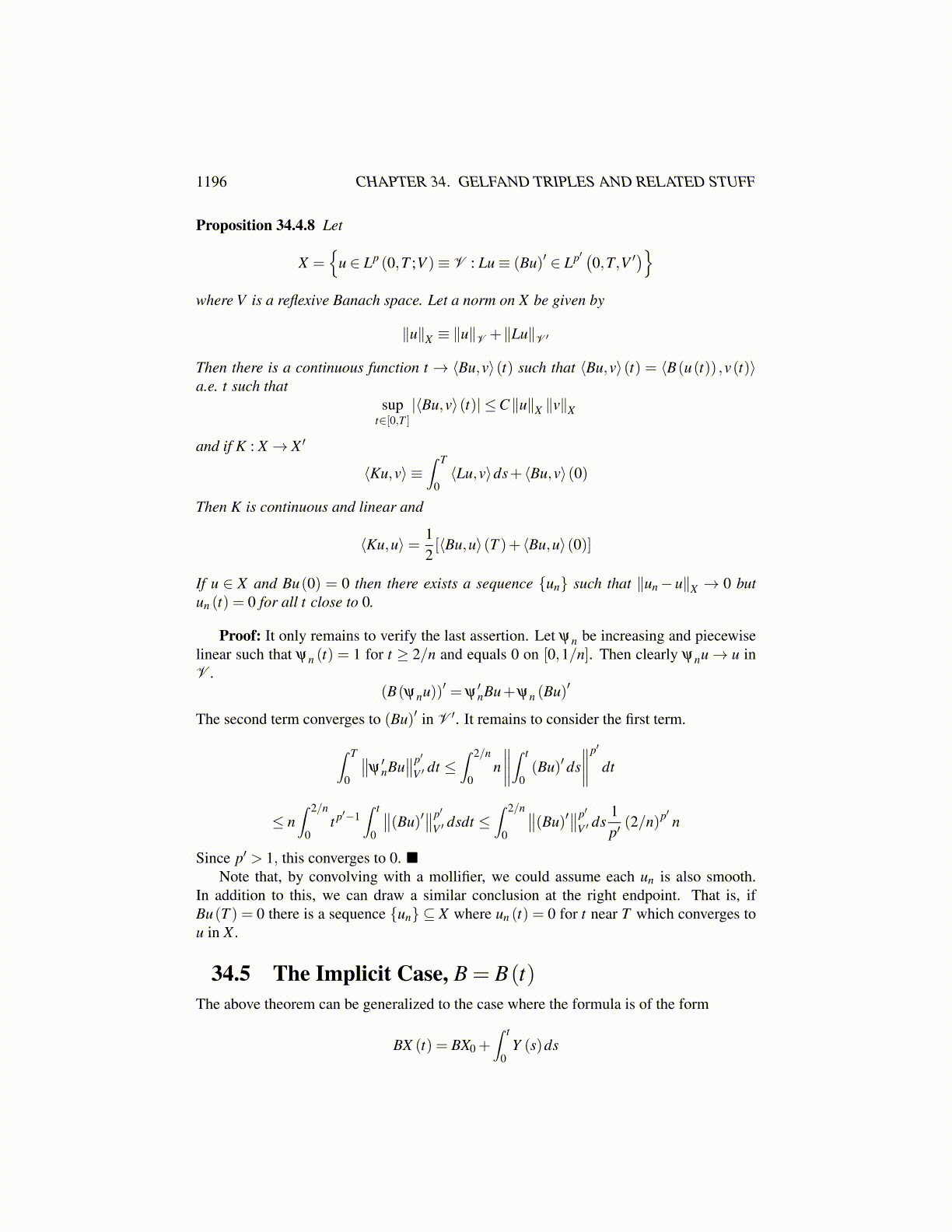
1196 CHAPTER 34. GELFAND TRIPLES AND RELATED STUFF
Proposition 34.4.8 Let
X ={
u ∈ Lp (0,T ;V )≡ V : Lu≡ (Bu)′ ∈ Lp′ (0,T,V ′)}where V is a reflexive Banach space. Let a norm on X be given by
∥u∥X ≡ ∥u∥V +∥Lu∥V ′
Then there is a continuous function t → ⟨Bu,v⟩(t) such that ⟨Bu,v⟩(t) = ⟨B(u(t)) ,v(t)⟩a.e. t such that
supt∈[0,T ]
|⟨Bu,v⟩(t)| ≤C∥u∥X ∥v∥X
and if K : X → X ′
⟨Ku,v⟩ ≡∫ T
0⟨Lu,v⟩ds+ ⟨Bu,v⟩(0)
Then K is continuous and linear and
⟨Ku,u⟩= 12[⟨Bu,u⟩(T )+ ⟨Bu,u⟩(0)]
If u ∈ X and Bu(0) = 0 then there exists a sequence {un} such that ∥un−u∥X → 0 butun (t) = 0 for all t close to 0.
Proof: It only remains to verify the last assertion. Let ψn be increasing and piecewiselinear such that ψn (t) = 1 for t ≥ 2/n and equals 0 on [0,1/n]. Then clearly ψnu→ u inV .
(B(ψnu))′ = ψ′nBu+ψn (Bu)′
The second term converges to (Bu)′ in V ′. It remains to consider the first term.
∫ T
0
∥∥ψ′nBu∥∥p′
V ′ dt ≤∫ 2/n
0n∥∥∥∥∫ t
0(Bu)′ ds
∥∥∥∥p′
dt
≤ n∫ 2/n
0t p′−1
∫ t
0
∥∥(Bu)′∥∥p′
V ′ dsdt ≤∫ 2/n
0
∥∥(Bu)′∥∥p′
V ′ ds1p′(2/n)p′ n
Since p′ > 1, this converges to 0.Note that, by convolving with a mollifier, we could assume each un is also smooth.
In addition to this, we can draw a similar conclusion at the right endpoint. That is, ifBu(T ) = 0 there is a sequence {un} ⊆ X where un (t) = 0 for t near T which converges tou in X .
34.5 The Implicit Case, B = B(t)The above theorem can be generalized to the case where the formula is of the form
BX (t) = BX0 +∫ t
0Y (s)ds